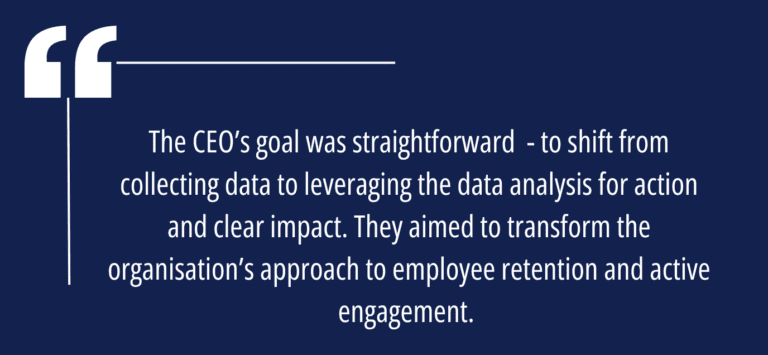Exploring the Causes and Effects of Employee Turnover in Organizations
December 23, 2024


A large organisation in the power sector which continues to grow steadily saw the need to get a deeper understanding of their employee turnover.
“We do exit interviews, however, the answers seem pretty standard. We don’t feel we are able to go deeper in understanding the real reason of people leaving the organisation.”
Several researches have shown that high employee turnover predicts low performance. It strains recruitment budgets, disrupts team dynamics, dampens morale, and can even erode organisational culture over time. Employee turnover can be a costly challenge.
Leaders often start questioning if developing people is at all worth the time and energy investment, if they are going to leave. When employee turnover is not addressed for long, trust starts dipping. Yet, without actionable insights, identifying and addressing the root causes of turnover becomes an uphill battle, leaving organisations stuck in a cycle of attrition and reaction.
The Challenge
Our client observed a concerning trend of consistent employee exits across various departments. To understand what led to the exodus, a leader started looking at the exit interviews for the past few months. He discovered the responses were generic, and lacked the depth needed to provide actionable insights.
The organisation diligently maintained the exit data and documented information related to the employee departure. The data analysis however was not practised. In addition, the subjective comments were less than transparent and indicated lack of trust in the process. In the end, the information did not offer a deeper understanding of how to create a better employee experience. The leadership expected a clear and candid feedback, to effectively address any underlying issue.
Research has shown that high turnover predicts low performance and that an organisation with turnover lower than its competitors’ can be at a considerable advantage—particularly if it retains its top performers. This is the benchmark the organisation aimed to reach.


A partnership with PeopleNorth was to ensure they get candid feedback, clearer understanding of the exit trends and a holistic view of people & culture. This collaboration aimed to uncover actionable insights that could directly enhance employee retention and overall organisational performance.
The PeopleNorth Approach
We designed an exit analysis process which created a safer space for the employees who chose to move out of the organisation. At the same time gave a meaningful understanding to the organisation to create a clear retention roadmap.
The Interviewer – Our Team Selection:
We carefully selected a group of people from our coaching and training team, who were skilled in communication and had the training to probe without making people feel interrogated. This was an important step. The quality of the data depended on the information ex-employees will choose to share. They may not feel motivated to explore their feelings or engage in a deep reflection. Our team had the training and expertise to manage range of emotions and use thought provoking, open ended questions.
Safe environment:
We kept a time gap between the employee exiting the company and the exit interview process. Indicating our sincerity in getting to understand the real reason of exit and intend to improve on the same.
Open communication:
We conducted in-depth exit interviews with open ended questions, encouraging narration and examples, to better understand their perspectives. Candid feedback is what we seek.
Data Analysis:
- Use existing data to get a deeper understanding of trends in exit in reference to – Tenure, Level, Function, Generation, Location etc.
- Cross reference to understand “Managerial” impact in voluntary separation.
- Pattern of movement to same or similar industries
- Analysed qualitative feedback to identify recurring themes and pain points, such as culture, role expectations, norms, workplace relationships, separation for further studies etc.
Report & Recommendations:
- Designed and delivered comprehensive report highlighting the key drivers of employee turnover, candid suggestions from ex-employees and areas of strength for the organisation.
- Discussed and shared strategic approach to retention, customised to the organisation’s needs, exit patterns and vision of the company.
Impact
Our approach created a needed mechanism for our client to systematically learn potential areas for improvement, laying the foundation for a more informed and proactive retention strategy. The early insights to underlying trends nudged our client to develop a detailed roadmap focused on employee career plan, conscious culture development and mindful application of organisation values and vision.
In today’s knowledge economy, skilled talent are the asset that drives organisational success. It is prudent for companies to learn from their employees — what makes them stay, what encourages them to leave, and how the organisation needs to change. A thoughtful exit-interview process can create a constant flow of feedback on all three fronts.
